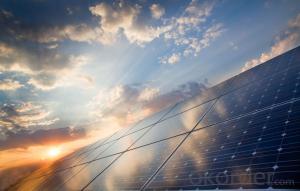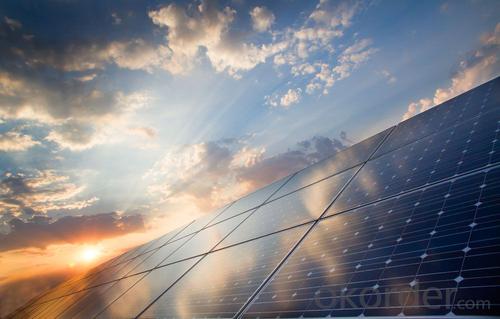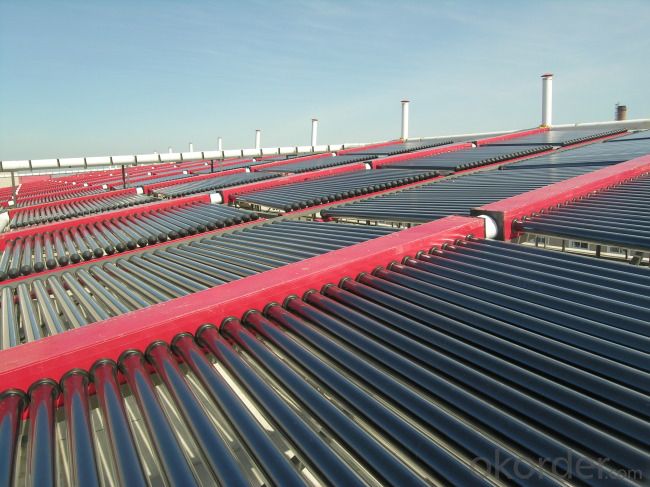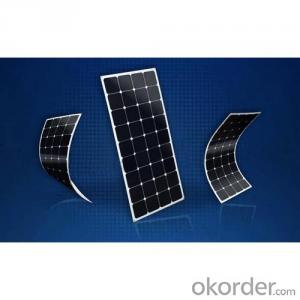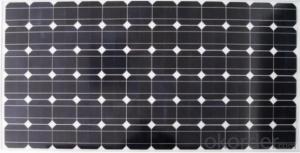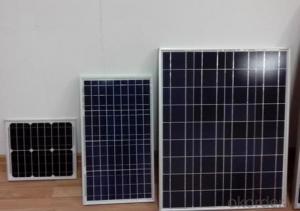Custom Shaped Solar Polycrystalline 156mm Series (160W-200W)
- Loading Port:
- Shanghai
- Payment Terms:
- TT OR LC
- Min Order Qty:
- 1000 watt
- Supply Capability:
- 20000000 watt/month
OKorder Service Pledge
OKorder Financial Service
You Might Also Like
Specification
1.Structure of Solar Module Description
Solar Polycrystalline 156mm Series (160W-----200W)
2.Characteristics of the Solar Module
| Max Power Voltage Vmp (V) | 35.6 | 35.8 | 35.8 | 35.6 | 36.0 |
| Max Power Current Imp (A) | 4.50 | 4.75 | 4.75 | 5.06 | 5.56 |
| Open Circuit Voltage Voc (V) | 43.4 | 43.6 | 43.4 | 43.4 | 44.0 |
| Short Circuit Current Isc (A) | 4.82 | 5.16 | 5.41 | 5.41 | 5.95 |
| Max Power Pm(W) | 160 | 170 | 180 | 190 | 200 |
3.Limits of the Solar Module
Operating Temperature ﹣40℃to+85℃
Storage Temperature ﹣40℃to+85℃
Max System Voltage 700V
4.Specifications of the Solar Module
| Power | 160W/170W | 180W/190W/200W |
| Dimension | 1200x992x35mm | 1330x992x35mm |
| Weight | 14.6kg | 16.2kg |
| Tolerance | ±3% | ±3% |
The dimension of the modules can be changed according to the demand of clients
5.Guarantee of the Solar Module
| Products Guarantee | 2 yrs free from defects in materials and
workmanship |
| Performance Guarantee | No less than 90% within 10yrs and no less than 80% within 20yrs |
| Certificates | IEC,ISO,TUV,CE |
6.Applications of the Solar Module
1.Electricity
2.Heat energy
7.IMages of the Solar Module
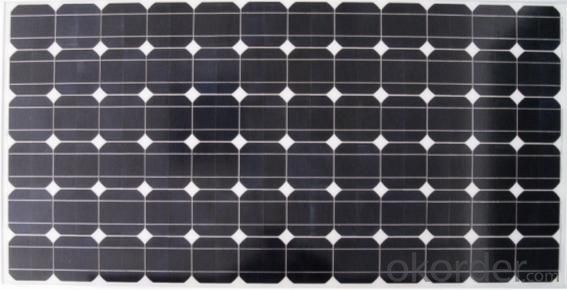
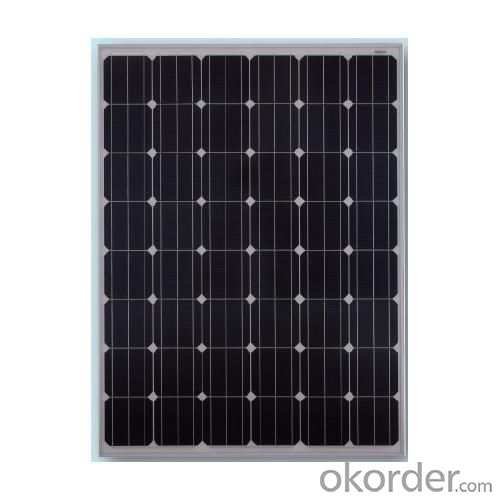

FAQ
1. Q: Do you have your own factory?
A: Yes, we have. Our factory located in Jiangyin city, jiangsu province.
2. Q: How can I visit your factory?
A: Before you take off from your country, please let us know. We will show you the way,or arrange time to pick you up if possible.
3. Q: Do you provide free sample?
A: Usually we do not offer free sample
4. Q: Could you print our company LOGO on the nameplate and package?
A: Yes, we can do that.
- Q: I'm from Toledo, OH about 2 miles from the MI line. We are a foster family and have adopted 5 children. We just moved into a 5400+sq 2 story home. We have (3) 2.5-3 ton AC units to cool this huge house. We got the house cheap...$75k couldn't pass it up! Anyway...I was wondering how many solar panels it would take and of what wattage to power these Central Air Units and maybe the rest of the house. We have 3 people in our home......9 of which are children who leave the lights on and run hot water to beat the band. We have all brand new energy star appliances and front loader washer and dryer. Gas Range and Gas hot water tank. Was thinking of using metal window frames and buying solar cells and making my own panels. Just don't know how much to buy. We face south with no trees. Constant Sun. thanks for your help. An e-mail address to bounce questions off of would be helpful if you experienced. tx.
- Basically, the answer to your question is forget it. Your approx 8 tons of AC will require about 28 KW of electricity just to run them. Add the rest of the house requirements and your talking a load of 50KW or more. Even if your state has a subsidy program, (and most of them are out of money now), it's a $200,000. system. Making your own panels would be a mistake. Reliability and survival are the key measures for a panel system and homemade panels are just not going to be reliable enough to survive the cold winters. In the end, it is always cheaper to buy good, conservatively rated commercial panels, especially in view of the fact that prices have been tumbling lately. Often, the mounting, interface and conversion costs are greater than the cost of the panels themselves. You might save some bucks by fabricating a mounting framework yourself and installing it, but such a system would not qualify for most state programs and.... you had better be an expert architect or engineer to put together something that will work well. The basic problem after all of this is that your maximum demand will be at night and the panels put out nothing at night. Better to forget about a 00% solution. You can install a modest 0 - 20KW system for perhaps $50,000 costs after rebates and subsidies and perhaps ... it might cover about /4 of your energy needs and might just, pay the investment back in 0 to 5 years. Get first rate equipment and professional installation, if you want the system to perform reliably. Solar voltaics make a lot of sense for Arizona and perhaps Florida. For anyone north of the Mason Dixon line however, fossil fuels are cheap, reliable and work far better.
- Q: What is the impact of roof color on solar panels' performance?
- The impact of roof color on solar panels' performance is minimal. While a darker roof color may slightly increase the temperature of the panels, leading to a slight decrease in efficiency, the difference is typically not significant enough to significantly impact their overall performance. Other factors such as panel tilt, orientation, shading, and maintenance have a much larger influence on solar panels' performance.
- Q: I know absolutely nothing about electronics but have a lot of money. I am thinking of buying the Sunforce 3730 30W monocrystalline solar panel (the best I could find that was that size or smaller). What would be a good battery to go with it? I am thinking of buying a 2V Concorde Sun Xtender (again, the best I could find). But how many batteries will I need? I want enough batteries that it would take the solar panel 2 days to completely charge them from empty (bearing in mind the unavoidable inefficiencies like cloudiness/changing sun angles). Also, what other stuff would I need, like I hear something about a quot;charge controllerquot;? Any suggestions would be appreciated.
- If you are at a location/time where the panel will put out less power, you can adjust the battery size accordingly. And running a battery to empty is very bad for it's service life, so it's better to go a bit bigger.
- Q: Parents planning on buying some solar panels for our house down in Dubai it really hot there I'm currently living in Canada, anyways I'm wondering how many solar panels and volts ill need to light up a 2400sq ft. House? Please leave you're suggestions below!
- It's not really the solar panels that power the house, they charge a battery bank and there's an inverter that jumps the battery power up to household current level. If you start getting into more expensive systems, they can sense when the batteries are full and start diverting power into the local electric grid. Some places the electric company is required to pay you for generating current, other places tell you tough luck. I suggest looking on OKorder or something at some of the home solar kits on sale there and look at how large a house they are rated for to get an idea of how big a system you're going to need. I don't know if you have access to the power bill history of the house you're getting in Dubai, but the power company there might be able to provide you with a history of average kW hours the house consumes. A 2400 sqft house with a gas stove and a gas water heater and wood heat is going to consume far less electricity than a house with all electric appliances and the consumption history of an individual house should reflect that so you can buy appropriately.
- Q: Can solar panels be used in areas with high temperatures?
- Yes, solar panels can be used in areas with high temperatures. In fact, solar panels are designed to withstand a wide range of temperatures, including high heat. While excessive heat may slightly reduce their efficiency, modern solar panels are equipped with cooling mechanisms that help maintain their performance even in hot climates.
- Q: Can solar panels be installed on a historic building?
- Yes, solar panels can be installed on a historic building with careful planning and consideration. It is important to ensure that the installation does not compromise the architectural integrity or aesthetic value of the building. Special mounting systems and design techniques can be used to minimize any visual impact. Additionally, local regulations and preservation guidelines may need to be followed.
- Q: Can solar panels be used in areas with high levels of noise from transportation?
- Yes, solar panels can be used in areas with high levels of noise from transportation. Noise pollution does not directly affect the functionality of solar panels as they primarily rely on sunlight to generate electricity. However, it is important to ensure that the installation of solar panels is done properly to avoid any physical damage caused by vibrations or other factors associated with transportation noise.
- Q: can i put a solar panel on a projector. if nt wat is a low energy projector that i can watch movies and play games on
- Solar panels put out DC voltage, like a battery. The projectors that plug into the wall require AC voltage. Unless you got a travel projector that plugs into a cigarette lighter (does that exist?), you would need to convert the DC power from the solar panel to AC for the projector with an inverter. And if you want to use it when the sun isn't shining, you'd need batteries to store the power.
- Q: Can solar panels be used to power a satellite?
- Yes, solar panels can be used to power a satellite. Solar panels convert sunlight into electricity, which can then be used to power various systems and instruments on board a satellite. The panels are typically positioned in such a way that they can receive maximum sunlight and generate sufficient power to meet the satellite's energy requirements.
- Q: Are solar panels expensive?
- Solar panels can be initially expensive to purchase and install, but their long-term benefits outweigh the cost. The price of solar panels has significantly decreased over the years, and there are various financing options available to make them more affordable for homeowners and businesses. Additionally, solar panels can save money on energy bills and provide a return on investment through incentives, tax credits, and potential resale value.
Send your message to us
Custom Shaped Solar Polycrystalline 156mm Series (160W-200W)
- Loading Port:
- Shanghai
- Payment Terms:
- TT OR LC
- Min Order Qty:
- 1000 watt
- Supply Capability:
- 20000000 watt/month
OKorder Service Pledge
OKorder Financial Service
Similar products
Hot products
Hot Searches
Related keywords
